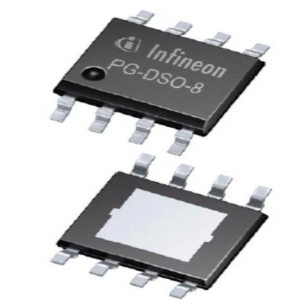CC1101RGPR RF Transceiver Low-Power Sub-1GHz RF Transceiver
♠ Product Description
| Product Attribute | Attribute Value |
| Manufacturer: | Texas Instruments |
| Product Category: | RF Transceiver |
| RoHS: | Details |
| Type: | Sub-GHz |
| Frequency Range: | 300 MHz to 348 MHz, 387 MHz to 464 MHz, 779 MHz to 928 MHz |
| Maximum Data Rate: | 500 kbps |
| Modulation Format: | 2-FSK, 4-FSK, ASK, GFSK, MSK, OOK |
| Supply Voltage - Min: | 1.8 V |
| Supply Voltage - Max: | 3.6 V |
| Supply Current Receiving: | 14 mA |
| Output Power: | 12 dBm |
| Minimum Operating Temperature: | - 40 C |
| Maximum Operating Temperature: | + 85 C |
| Interface Type: | SPI |
| Package/Case: | QFN-20 |
| Packaging: | Reel |
| Packaging: | Cut Tape |
| Packaging: | MouseReel |
| Brand: | Texas Instruments |
| Maximum Operating Frequency: | 348 MHz, 464 MHz, 928 MHz |
| Moisture Sensitive: | Yes |
| Mounting Style: | SMD/SMT |
| Number of Receivers: | 1 |
| Number of Transmitters: | 1 |
| Operating Supply Voltage: | 1.8 V to 3.6 V |
| Product Type: | RF Transceiver |
| Sensitivity: | - 116 dBm |
| Series: | CC1101 |
| Factory Pack Quantity: | 3000 |
| Subcategory: | Wireless & RF Integrated Circuits |
| Technology: | Si |
| Unit Weight: | 70 mg |
♠ Low-Power Sub-1 GHz RF Transceiver
CC1101 is a low-cost sub-1 GHz transceiver designed for very low-power wireless appli-cations. The circuit is mainly intended for the ISM (Industrial, Scientific and Medical) and SRD (Short Range Device) frequency bands at 315, 433, 868, and 915 MHz, but can easily be programmed for operation at other frequencies in the 300-348 MHz, 387-464 MHz and 779-928 MHz bands. The RF transceiver is integrated with a highly configurable baseband modem. The modem supports various modulation formats and has a configurable data rate up to 600 kbps.
CC1101 provides extensive hardware support for packet handling, data buffering, burst transmissions, clear channel assessment, link quality indication, and wake-on-radio. The main operating parameters and the 64- byte transmit/receive FIFOs of CC1101 can be controlled via an SPI interface. In a typical system, the CC1101 will be used together with a microcontroller and a few additional passive components.
The CC1190 850-950 MHz range extender [21] can be used with CC1101 in long range applications for improved sensitivity and higher output power.
RF Performance
• High sensitivity o -116 dBm at 0.6 kBaud, 433 MHz, 1% packet error rate o -112 dBm at 1.2 kBaud, 868 MHz, 1% packet error rate
• Low current consumption (14.7 mA in RX, 1.2 kBaud, 868 MHz)
• Programmable output power up to +12 dBm for all supported frequencies
• Excellent receiver selectivity and blocking performance
• Programmable data rate from 0.6 to 600 kbps
• Frequency bands: 300-348 MHz, 387-464 MHz and 779-928 MHz
Analog Features
• 2-FSK, 4-FSK, GFSK, and MSK supported as well as OOK and flexible ASK shaping
• Suitable for frequency hopping systems due to a fast settling frequency synthesizer; 75 μs settling time
• Automatic Frequency Compensation (AFC) can be used to align the frequency synthesizer to the received signal centre frequency
• Integrated analog temperature sensor
Digital Features
• Flexible support for packet oriented systems; On-chip support for sync word detection, address check, flexible packet length, and automatic CRC handling
• Efficient SPI interface; All registers can be programmed with one “burst” transfer
• Digital RSSI output
• Programmable channel filter bandwidth
• Programmable Carrier Sense (CS) indicator
• Programmable Preamble Quality Indicator (PQI) for improved protection against false sync word detection in random noise
• Support for automatic Clear Channel Assessment (CCA) before transmitting (for listen-before-talk systems)
• Support for per-package Link Quality Indication (LQI)
• Optional automatic whitening and de-whitening of data
Low-Power Features
• 200 nA sleep mode current consumption
• Fast startup time; 240 μs from sleep to RX or TX mode (measured on EM reference design [1] and [2])
• Wake-on-radio functionality for automatic low-power RX polling
• Separate 64-byte RX and TX data FIFOs (enables burst mode data transmission)
General
• Few external components; Completely on-chip frequency synthesizer, no external filters or RF switch needed
• Green package: RoHS compliant and no antimony or bromine
• Small size (QLP 4×4 mm package, 20 pins)
• Suited for systems targeting compliance with EN 300 220 (Europe) and FCC CFR Part 15 (US)
• Suited for systems targeting compliance with the Wireless MBUS standard EN 13757-4:2005
• Support for asynchronous and synchronous serial receive/transmit mode for backwards compatibility with existing radio communication protocols
• Ultra low-power wireless applications operating in the 315/433/868/915 MHz ISM/SRD bands
• Wireless alarm and security systems
• Industrial monitoring and control
• Wireless sensor networks
• AMR – Automatic Meter Reading
• Home and building automation
• Wireless MBUS







